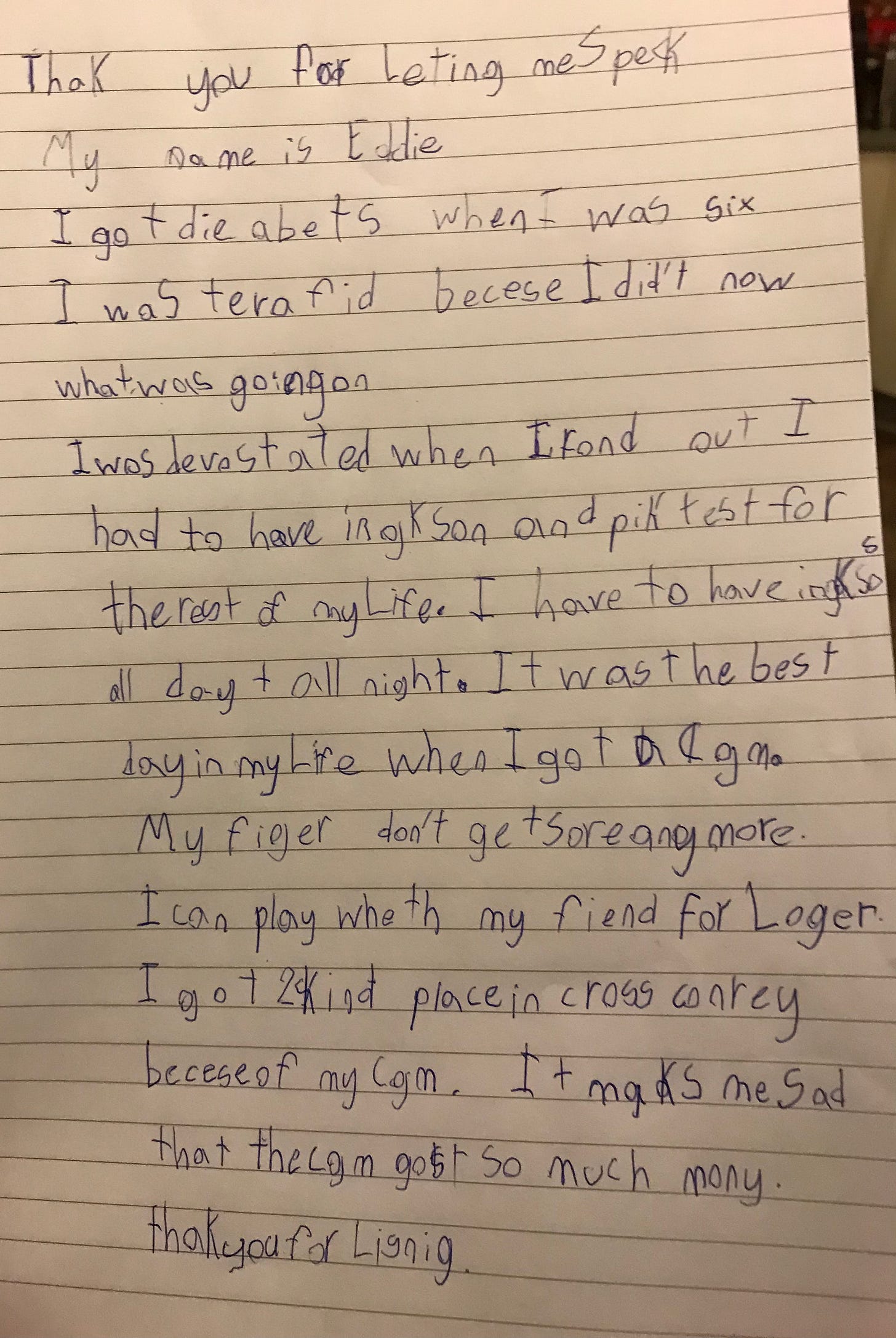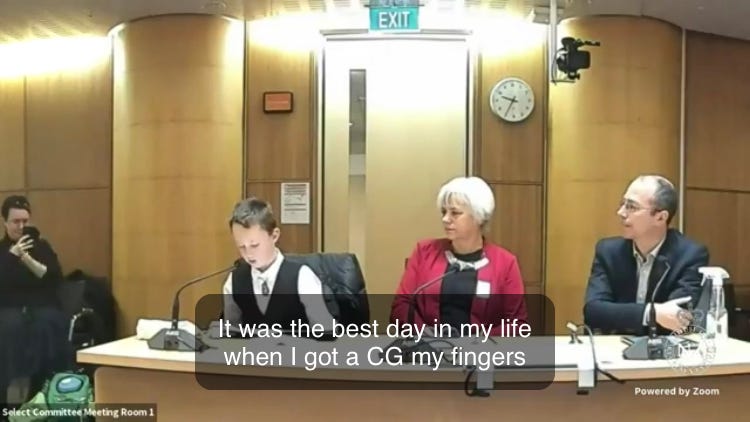In November 2019 Diabetes New Zealand presented a petition with close to 28,000 signatures to parliament. The petition called for funding for Continuous Glucose Monitors (CGMs)
Pharmac have continued to restrict their funding of CGMs despite the fact that they are essential for people with Type 1 diabetes. Today, the Health Select Committee were able to discuss the petition and the funding of Continuous Glucose Monitors for Type One Diabetics.
Eddie was invited by Diabetes New Zealand to speak. He practiced his speech over and over again. He ironed his shirt and pants. He had his suit on. He wanted to look sharp. “So, they will listen to me and take me serious!” He has written to Andrew Little before, but he never got a response.
He’s also been on Seven Sharp - talking about funding for CGMs.
I started crying as soon as he began his mihi. I’m just so very proud of him.
I thought 22 August, 2019 was the worst day of my life. It was the day he almost died from diabetic ketoacidosis. We didn’t know he had type one diabetes. He’d been sick for weeks and we’d gone to our GP for answers but they didn’t test him.
When I saw him unconscious in hospital - so frail and tiny - I thought it had to be the worst day of my life. But it wasn’t. The worst day was a few days later when we were forced to hold him down while we injected him with insulin.
It took my husband and I and a nurse and doctor to hold him down even though he only weighed 15kg. He was crying and begging us: “Please mama, stop hurting me! Please daddy, it hurts!” He begged us not to put another needle into him. He told me how much it hurt. He said “I’ll be good! I’ll do anything!”
It was the worst thing - pinching him and putting the needle into his stomach as he screamed and cried in pain. We were then told that to keep him alive we would need to do this multiple times a day and night.
We then found out we would also have to prick his finger every hour as his levels were so unstable.
Eventually he stopped screaming but he never stopped crying. They were just silent tears. And I felt like the worst mother in the entire world. How could I do this to my baby? How could I not?
I thought those were the worst days of my life but maybe it was when I was first told about ‘Dead in Bed Syndrome’. Imagine kissing your precious baby goodnight, reading them a sleepy story, singing them a lullaby, and then tucking them in.
Imagine waking in the morning to find your baby had died in their sleep.
These deaths are unexplained. And they’re not the only risk to Diabetics.
My son could also die from hypoglycemia. If he doesn’t die he could suffer permanent neurological damage. You must monitor your child’s blood glucose levels as you would during the day to minimise that risk. So that means we check his levels all night.
We have had many worst days since he was diagnosed.
I still have nightmares about the months that I had to hold him down and inject into his bruised skin until he gave up and surrendered to the pain.
He was six years old. Now he’s eight.
His fingers became infected because he was six years old and he loves to dig in sand at the beach. He loves to swim and the salt would make his fingers ache.
We saved and saved to get a continuous glucose monitor and when we saw him wearing it for the first time we were so happy that he was so happy. He could let his tiny fingers rest. He had freedom. He stopped having so many lows and highs because the CGM gave us more information.
In the night we weren’t waking him up to wash his hands and then finger prick him. He could sleep through us scanning him. We had more information to prevent hypoglycemia at night.
But we were also afraid - how could we ever take this away from him? Now that he’d used a CGM we couldn’t possibly tell him that we couldn’t afford another one in two weeks when it ran out. So what could we do?
We sold things. Asked for help from family. Went without. And he’s had a CGM ever since. The CGM is his lifeline and he shouldn’t suffer because of the cost.
But all over the country there are kids like him getting two weeks of freedom, only to have it snatched away. Simply because their parents can’t afford this life-saving technology.
My son never deserved diabetes. Nobody does. He never deserved the pain he has gone through his whole short life so far. He deserves care and compassion.
All of our tamariki fighting type one diabetes so bravely deserve care and compassion.
CGMs save lives. We must stand up together to honour kids who fight every day and face such huge odds. This is one small thing that can be done to make their lives just a tiny bit easier.
Here’s what Eddie said to the Health Select Committee.
You can watch it here at about 11 minutes. Please consider sharing it online. The more noise we make, the less chance there is that they ignore us.
Thank you for letting me speak.
Tēnā kōrua. Ko Eddie tōku ingoa. Ko Ngāti Mutunga tōku iwi. Ko Moriori tōku tūpuna.
I got diabetes when I was six.
I was terrified because I didn’t know what was going on.
I was devastated when I found out I had to have injections and prick tests for the rest of my life.
I have to have injections all day and all night.
It was the best in my life when I got a CGM.
My fingers don’t get sore anymore.
I can play with my friends for longer.
I got second place in Cross Country because of my CGM.
It makes me sad that CGMs cost so much money.
Thank you for listening.
*
It was super brave of Eddie to speak up like he did. So I hope they listen.
Aroha nui, Emily






He was amazing. This must be so wildly frustrating though, this is a no-brainer even using the most basic cost-benefit criteria. I can only assume it’s just that the savings of preventing complications don’t get funneled back into Pharmac so they don’t assess the extent to which these devices pay for themselves?! Not to mention the psychological benefits to parents of not worrying that their child might die in their sleep wtf I’m still crying ❤️
What an amazing kid. I really hope they listen to him